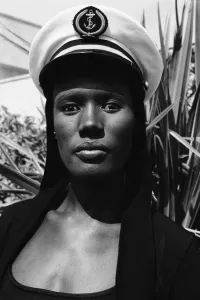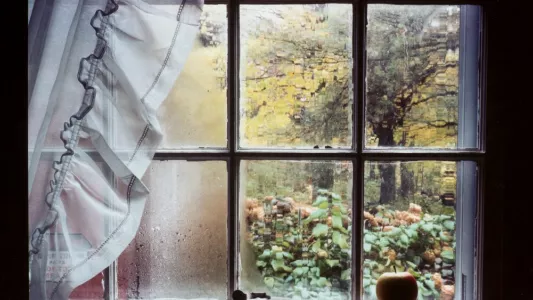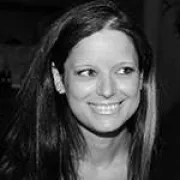Ever since its invention back in the 18th century, photography has been documenting life. At the same time, it focuses on inviting audiences to a rather subjective world while trying to be taken seriously as an art form. Photography has always been considered a male dominated profession, but luckily things are changing. Scholars, writers, bloggers, photography students and enthusiasts have been giving due to the female pioneers of the field. Most of them were always standing and/or hiding in the shadows, oblivious to how much they could acclaim and accomplish. Arguably, the technique, concepts and themes female photographers use, differ from those of male photographers. When most women were convinced that their place was in the kitchen and certainly not in the dark room, there were those who were struggling to surpass their male counterparts and work towards gaining respect and recognition for their work.
Our whole guise is like giving a sign to the world to think of us in a certain way, but there’s a point between what you want people to know about you and what you can’t help people knowing about you. And that has to do with what I’ve always called the gap between intention and effect.

• June Newton (Australian photographer, 1923-) is perhaps better known as the widow of photographer Helmut Newton, but that is the least interesting thing about her. Professionally, she is also known as Alice Springs. An elusive, yet influential photographer, June was born in Melbourne and was an awarded actress before answering her soon-to-be husband’s ad for a modelling job. June picked up photography in 1970, when Helmut fell ill. By 1974, she was already a published photographer. She started as a fashion photographer and then continued as a portraitist, while working as her husband’s model, art-director, editor and curator at the same time. Her work is very different than Helmut’s; she’s interested in the psychology of her sex and captures other women on film in a distinctive and powerful way, while at the same time capturing their soul and spirit. Many say that June Newton became a photographer by chance, but her work establishes an honest and intimate relationship between photographer and model.
• Diane Arbus (American photographer, 1923-1971) is widely known for photographing people that others would hesitate to even come in contact to. Born in New York, to a wealthy and very artistic family, Arbus married actor and photographer Allan Arbus at the age of 18. The couple worked together in commercial photography from 1946 to 1956, but Allan remained very supportive of Diane’s work, even after they separated and she left the business to begin an independent relationship with photography. Diane took photography lessons with Berenice Abbott, Alexey Brodovich and Lisette Model and soon developed a personal style that many describe as “innovative artistry”. Fascinated by risk-taking, Diane had long embraced the New York City art world’s life-on-the-edge attitudes about money, social status and sexual freedom. She pursued the same kind of thrill in her photographs, which – at the time – was unheard of for a woman. Early in her photography career, Diane Arbus was perplexed about how to possibly capture the grand mélange of humanity in her work. She would photograph people on the fringes of society, so-called recluses, including the mentally ill, transgender people and circus performers. Her poignant black and white portraits are highly controversial, while her work continues to influence the development of contemporary photography. Arbus took her own life a little after her 48th birthday. Her work has been the subject of more than 25 major solo exhibitions, eight authorized publications, and countless critical articles.

• Sonja Bullaty (Czech-American photographer, 1923-2000) was born in Prague and was a Holocaust survivor. After the war, she worked as photographer Josef Sudek’s assistant and was later invited to stay in the United States. Bullaty found work with a photographer on her third day in New York and met Angelo Lomeo. Soon, they started photographing together, travelling and sharing resources and by 1951 they were married. As photographers, Bullaty and Lomeo started using studio cameras, but eventually changed to working on location with 35mm SLR cameras. They began their career photographing artwork for museums and galleries. Much of their work was originally in black and white, but they switched to color in 1970. They had their first photographic assignment in 1948, located in the American South. While photographing, Bullaty was grabbed by a Ku Klux Klansman and “pretended to be merely a tourist”. The couple were the first to receive the Olivia Ladd Gilliam Award from the Orion Society. Their work appeared in LIFE, Time and Audubon magazines. They both exhibited at the Metropolitan Museum of Art, the International Center of Photography, the George Eastman House, UMPRUM Museum, in the Nikon House galleries and other venues. Despite working together, Bullaty had her own personal vision; she was intrigued by “Kafkaesque shadows from her childhood”. She also captured the effects of climate and seasons in her landscape work. She was widely known for her lyrical composition and strong use of color and light. Sonja Bullaty may not be directly associated with feminism in the art of photography, but the hardships she went through make her more than worthy to be mentioned in this feature.
We will continue talking about female names that left their mark in photography and about contemporary female photographers who are still to emerge. There are a lot of female photographers out there deserving of praise and we can only hope to cover as many of them as we can. Please, follow this space to find out more.
I have often felt that the reason I celebrate life and beauty is precisely because I have seen so much pain and ugliness.








